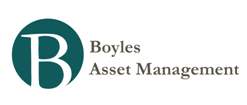Bill Moyers interviews Jane Goodall
When Jane Goodall walked into the building for this interview, faces lit up. Our security chief told me she does animal rescue work after hours because of Goodall. Our stage manager whispered into my ear, “She’s been my hero for decades.” And the nine-year-old daughter of our video editor hurried into the studio because she was writing a school report on Goodall (she got an A, by the way). Everyone was aware of who Jane Goodall is or what she has done to close the gap between the animal world and our own species.
Goodall herself evolved from a youthful enthusiast of animals—inspired by her father’s gift to her of a toy chimpanzee he named Jubilee—to the world’s most noted observer of chimpanzees and a global activist for all of life on earth. Through a chain of unintended consequences, the young Goodall met the famous anthropologist Louis Leakey in Kenya, was hired as his secretary, and then was sent into the forest as his primary researcher on chimps. Over many years in the Gombe Stream National Park, she came to know her subjects as individuals with distinct personalities, and with social and family lives shaped by their emotions, as are our own. Her landmark studies diminished the distance between human and nonhuman, and her television specials were so popular it became easy to think all of us had grown up with her and the chimps.
She and I were born a few weeks apart in 1934, and I am in awe at the pace she keeps, traveling more than three hundred days a year for the Jane Goodall Institute, challenging audiences to see themselves as caretakers of the natural world. Her Roots & Shoots program nurtures young people in more than 120 countries, teaching and encouraging them to improve and protect the environment. In a time of gloom and doom, as species disappear every day, development consumes more and more land, and global warming roils the climate, Jane Goodall insists that all is not yet lost.
- So Bill Gates Has This Idea For A History Class
Link to article: So Bill Gates Has This Idea for a History Class In 2008, shortly after Bill Gates stepped down from his executive role at Microsoft, he often awoke in his 66,000-square-foot home on the eastern bank of Lake Washington and walked...
- Richard Leakey: Evolution Debate Will Soon Be History
Richard Leakey predicts skepticism over evolution will soon be history. Not that the avowed atheist has any doubts himself. Sometime in the next 15 to 30 years, the Kenyan-born paleoanthropologist expects scientific discoveries will have accelerated to...
- Amazon's Hit Man
Found via The Big Picture. Larry Kirshbaum was the ultimate book industry insider—until Amazon called In November 1997, on a night of pounding rain in midtown Manhattan, Rupert Murdoch threw a party for Jane Friedman, the new chief executive officer...
- What Is The Best Fitness Regimen For A Tiger? The Case For Authentic Human Movement.
What is the best fitness regimen for a tiger (or a tigress)? Does the question make you smile? Does it sound irrelevant or stupid? And, most importantly, what’s the answer? How would you train a wild tiger so it can be fit? Would you train it by doing...
- Other Video Clips From Omaha
Here are a few seconds of video footage I took in Omaha not related to Berkshire Hathaway. I visited the zoo on Sunday morning. I'm not sure if this gorilla was playful or angry, but he sure knows how to entertain a crowd. .......................

